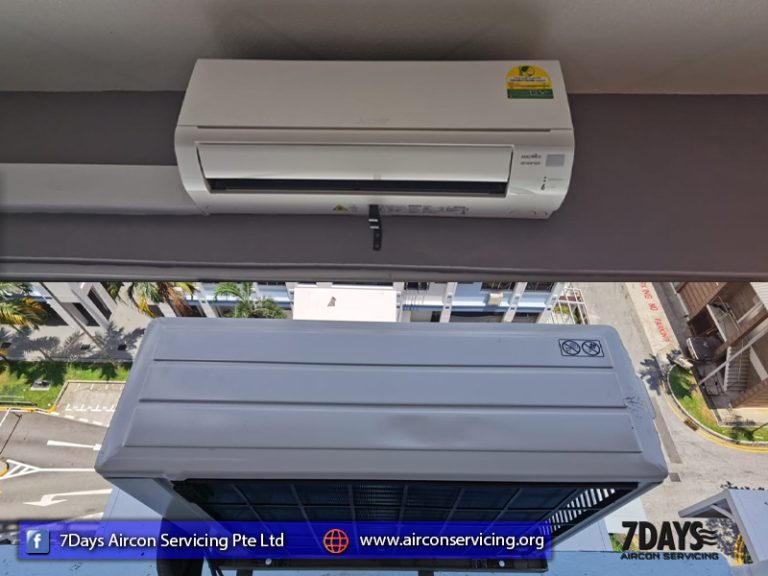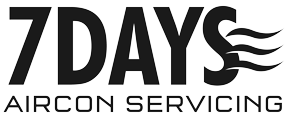
## Introduction
Air conditioning has become an indispensable part of modern life, especially in places like Singapore where the climate can be unforgivingly hot and humid. Within these air conditioning systems, thermostats play a crucial role in maintaining indoor comfort by regulating temperature levels. However, many people overlook the importance of properly calibrating their thermostats, which can lead to inefficient cooling, increased energy bills, and unnecessary wear and tear on the system. In this comprehensive guide, we will explore the role of aircon thermostats and provide valuable insights on how to calibrate them for optimal performance, with a specific focus on aircon servicing in Singapore. By understanding the significance of thermostat calibration and implementing best practices, you can ensure that your air conditioning system operates efficiently and effectively, keeping you comfortable all year round.
Aircon servicing in Singapore is essential due to the country’s tropical climate, where air conditioning is a necessity rather than a luxury. With temperatures often soaring and humidity levels remaining high, aircon systems work tirelessly to provide relief from the heat. However, without proper calibration of the thermostats, these systems may not perform optimally, leading to discomfort and dissatisfaction among occupants. Therefore, it is crucial to understand how thermostats work and the steps involved in calibrating them for efficient operation.
Thermostats serve as the control center of an air conditioning system, monitoring indoor temperatures and signaling the system to turn on or off accordingly. When properly calibrated, thermostats ensure that the desired temperature is maintained consistently, leading to comfortable indoor environments and optimal energy efficiency. However, factors such as incorrect placement, dust accumulation, and age can affect thermostat accuracy, necessitating periodic calibration to maintain performance.
In this blog post, we will delve into the intricacies of aircon thermostats, including their functionality, common issues, and the calibration process. We will also provide practical tips on how to calibrate thermostats for optimal performance, along with guidance on when to seek professional aircon servicing in Singapore for thermostat-related issues. By following the advice outlined in this guide, you can maximize the efficiency and longevity of your air conditioning system while enjoying uninterrupted comfort in your home or office.
### Understanding Aircon Thermostats
Thermostats are devices designed to regulate temperature by controlling the operation of heating or cooling systems. In air conditioning systems, thermostats measure the temperature of the air in the vicinity and send signals to the HVAC (Heating, Ventilation, and Air Conditioning) system to adjust output accordingly. Modern thermostats often feature digital displays, programmable settings, and smart capabilities, allowing users to customize comfort levels and maximize energy efficiency.
### Common Issues with Aircon Thermostats
Despite their importance, aircon thermostats can experience various issues that affect their accuracy and performance. Some common issues include:
**1. Incorrect Placement:** Placing thermostats near heat sources or in direct sunlight can lead to inaccurate temperature readings, resulting in improper cooling or heating.
**2. Dust Accumulation:** Dust and debris can accumulate on thermostat sensors over time, causing them to malfunction or provide inaccurate readings.
**3. Age and Wear:** Like any electronic device, thermostats can degrade over time, leading to decreased accuracy and responsiveness.
**4. Calibration Drift:** Over time, thermostats may drift from their original calibration settings, leading to discrepancies between the displayed temperature and the actual ambient temperature.
### Calibrating Aircon Thermostats for Optimal Performance
Calibrating aircon thermostats is essential for ensuring accurate temperature control and efficient operation of the HVAC system. While the calibration process may vary depending on the type and model of the thermostat, the following steps provide a general guideline:
**1. Check Thermostat Placement:** Ensure that the thermostat is installed away from heat sources, direct sunlight, and drafts, as these factors can affect temperature readings.
**2. Clean Thermostat Sensors:** Use a soft brush or compressed air to remove dust and debris from thermostat sensors. Ensure that the sensors are free from obstructions for accurate temperature measurement.
**3. Verify Temperature Accuracy:** Use a separate thermometer to verify the accuracy of the thermostat’s temperature readings. If discrepancies are observed, calibration may be necessary.
**4. Adjust Calibration Settings:** Refer to the thermostat’s user manual for instructions on how to access calibration settings. Follow the manufacturer’s guidelines to adjust the thermostat’s calibration settings as needed.
**5. Test and Monitor:** After calibrating the thermostat, monitor its performance to ensure that it accurately maintains the desired temperature. Make any additional adjustments if necessary.
### When to Seek Professional Aircon Servicing in Singapore
While calibrating thermostats can often be done by homeowners, certain issues may require professional attention. Consider seeking professional aircon servicing in Singapore if:
– The thermostat continues to provide inaccurate temperature readings after calibration.
– The thermostat displays error codes or malfunctions frequently.
– The HVAC system fails to maintain consistent temperature levels despite thermostat adjustments.
## Conclusion
Aircon thermostats play a critical role in maintaining indoor comfort and energy efficiency, making proper calibration essential for optimal performance. By understanding how thermostats work and implementing best practices for calibration, you can ensure that your air conditioning system operates efficiently and effectively, even in the sweltering heat of Singapore.
Regular aircon servicing in Singapore is essential for addressing thermostat-related issues and ensuring the longevity of your HVAC system. Professional technicians have the expertise and tools necessary to diagnose and rectify thermostat problems, helping you avoid discomfort and unnecessary expenses.
By prioritizing thermostat calibration and investing in professional aircon servicing, you can enjoy reliable and efficient cooling year-round, keeping your home or office comfortable regardless of the weather outside.
## FAQs
### 1. How often should aircon thermostats be calibrated?
It is recommended to calibrate aircon thermostats at least once a year to ensure accurate temperature control and optimal performance. However, if you notice significant discrepancies in temperature readings or other issues, calibration may be necessary more frequently.
### 2. Can I calibrate my aircon thermostat myself?
Yes, many thermostats feature calibration settings that can be adjusted by homeowners. However, if you are unsure or encounter difficulties during the calibration process, it is advisable to seek professional assistance to avoid potential damage to the thermostat or HVAC system.
### 3. What are the signs that my aircon thermostat needs calibration?
Signs that your aircon thermostat may need calibration include inconsistent temperature levels, frequent cycling of the HVAC system, and noticeable differences between the displayed temperature and the actual ambient temperature. If you notice any of these issues, consider calibrating the thermostat to restore optimal performance.
### 4. How can I ensure accurate temperature readings from my thermostat?
To ensure accurate temperature readings, place the thermostat away from heat sources, direct sunlight, and drafts. Additionally, regularly clean the thermostat sensors to remove dust and debris that may affect temperature measurement.
### 5. What should I do if my thermostat displays error codes?
If your thermostat displays error codes or malfunctions frequently, refer to the user manual for troubleshooting steps. If the issue persists, contact a professional aircon servicing provider in Singapore for assistance in diagnosing and resolving the problem.
### 6. Can thermostat calibration help reduce energy consumption?
Yes, properly calibrated thermostats can help reduce energy consumption by ensuring that the HVAC system operates efficiently and only runs when necessary. By maintaining accurate temperature control, calibrated thermostats

